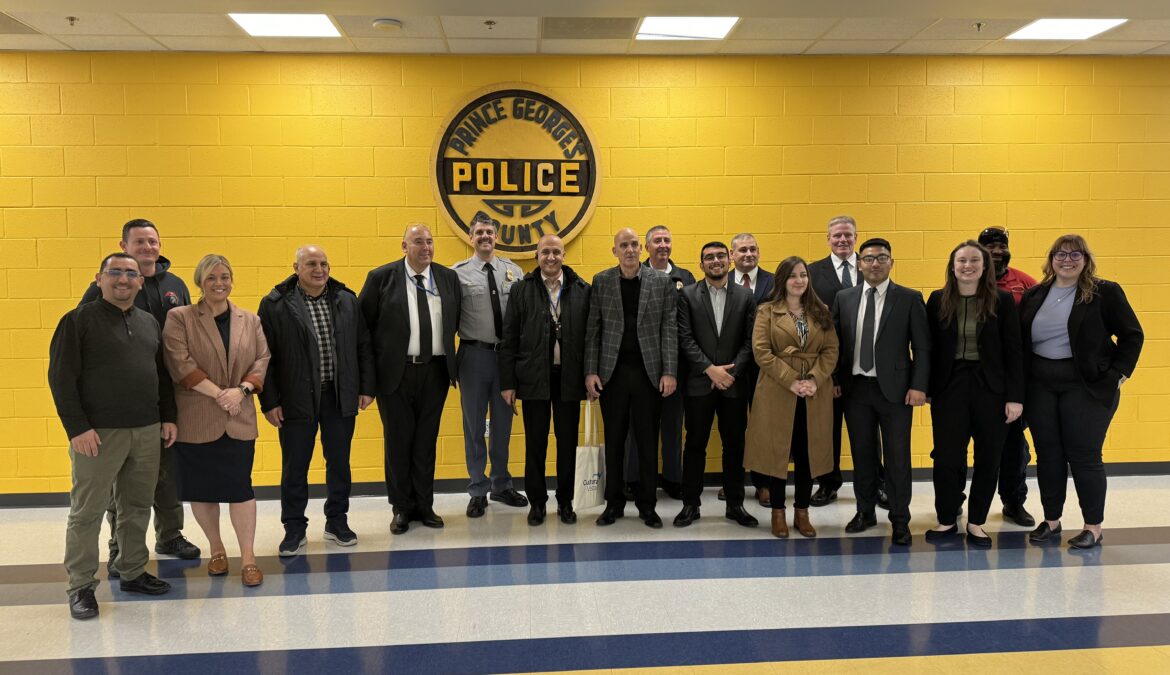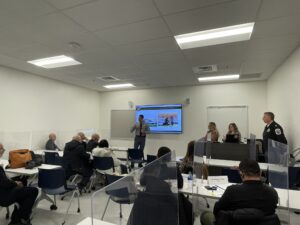Building on the success of our presentations at the Maryland Emergency Management Association (MDEMA) Symposium earlier this year, the Maryland-National Capital Region Emergency Response System (MDERS) continued to showcase our stakeholder’s cutting-edge initiatives on a national stage. Last month, MDERS and the Montgomery County Police Department (MCPD) had the privilege of presenting at the National Homeland Security Conference (NHSC) in Miami, Florida, one of the most significant gatherings of homeland security professionals in the country.
The NHSC brings together professionals from various sectors, including homeland security, law enforcement, fire, and emergency management. Participants range from federal agency officials and nonprofit representatives to business owners, academic leaders, and key decision-makers. This conference serves as a crucial platform for sharing insights into emerging trends and technologies in the field of homeland security.
At this year’s conference, MDERS and MCPD proudly presented within the Emerging Technologies track, focusing on integrating drones into emergency response operations. Our presentation, which built upon the foundation laid at the MDEMA Symposium, emphasized the innovative ways drones are utilized to enhance situational awareness, improve decision-making, and, ultimately, save lives during critical incidents.

“Presenting at the National Homeland Security Conference was an exceptional experience,” said Hannah Thomas, Deputy Director of Operational Support. “We had the opportunity to engage with sUAS operators from across the country, exchanging knowledge and best practices. The connections we made are truly invaluable resources.”
The presentation resonated with a broader and more diverse audience, sparking meaningful discussions on the future of drone technology in emergency management and the wider field of public safety. Attendees were particularly interested in the practical applications of drones for real-time incident assessment, search and rescue operations, and support during large-scale emergencies. The session highlighted how drones can be integrated into existing emergency response frameworks, demonstrating their potential to transform traditional approaches to public safety.
Participating at the NHSC was an invaluable experience, allowing MDERS and MCPD to contribute to the national conversation on emerging technologies in homeland security. MDERS looks forward to continuing our work in this area, exploring new ways to leverage technology for the safety and security of our communities.
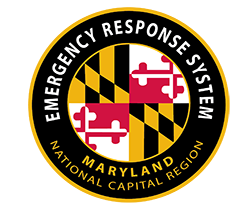


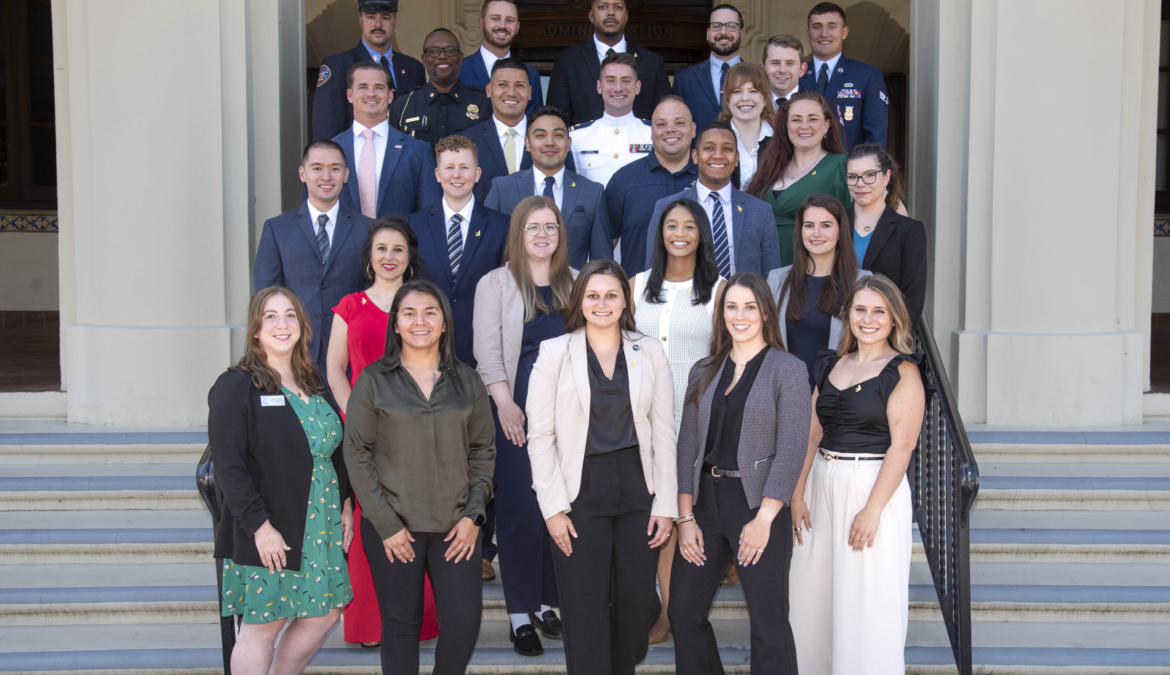



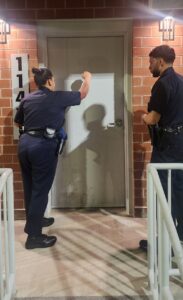


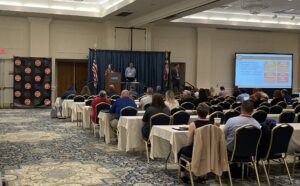 This program prepositions sUAS platforms, commonly known as drones, to provide rapid situational assessments to emergency calls in Silver Spring. The presenters highlighted the program’s achievements in tracking suspects involved in various crimes and outlined the financial costs, operational logistics, data collection, and transparency efforts required for sustaining the program. Due to its success, MCPD plans to expand the DFR program to several other locations in the county.
This program prepositions sUAS platforms, commonly known as drones, to provide rapid situational assessments to emergency calls in Silver Spring. The presenters highlighted the program’s achievements in tracking suspects involved in various crimes and outlined the financial costs, operational logistics, data collection, and transparency efforts required for sustaining the program. Due to its success, MCPD plans to expand the DFR program to several other locations in the county.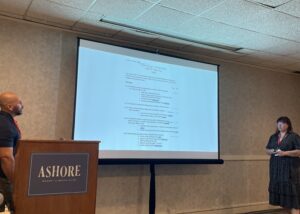


 child and sex trafficking crimes. The presenters, Sergeant Greg Flores and Detective Julia Tafesh of the Las Vegas Metropolitan Police Department (LVMPD), discussed proactive investigation strategies implemented to arrest offenders and innovative approaches to reduce violent crimes associated with human trafficking. During the 2023 Formula 1 and Super Bowl, the pair analyzed how LVMPD’s tactical investigation methods have contributed to a significant number of arrests and recovery of victims.
child and sex trafficking crimes. The presenters, Sergeant Greg Flores and Detective Julia Tafesh of the Las Vegas Metropolitan Police Department (LVMPD), discussed proactive investigation strategies implemented to arrest offenders and innovative approaches to reduce violent crimes associated with human trafficking. During the 2023 Formula 1 and Super Bowl, the pair analyzed how LVMPD’s tactical investigation methods have contributed to a significant number of arrests and recovery of victims. devastating impact of the wildfires. The panelists explored how MD-TF1 performed large-scale searches of collapsed structures and vehicles to identify missing persons, recover valuables, and investigate loss of life. The MD-FT1 was equipped with an experienced medical team consisting of physicians and paramedics who treated life-threatening injuries and illnesses caused by the wildfires. While operating for seven days to mitigate the impact of the wildfires, the panelist emphasized the importance of mental health treatment and peer support to help incident personnel transition back into their daily roles.
devastating impact of the wildfires. The panelists explored how MD-TF1 performed large-scale searches of collapsed structures and vehicles to identify missing persons, recover valuables, and investigate loss of life. The MD-FT1 was equipped with an experienced medical team consisting of physicians and paramedics who treated life-threatening injuries and illnesses caused by the wildfires. While operating for seven days to mitigate the impact of the wildfires, the panelist emphasized the importance of mental health treatment and peer support to help incident personnel transition back into their daily roles.
 During the response phase, participants discussed a variety of initial actions that involved the activation of the Emergency Operations Center (EOC), preparing Hazardous Materials (HAZMAT) operations, contacting poison control personnel, and deploying decontamination equipment to establish the immediate removal of contaminants. Considering the large acute exposure, participants reviewed real-time information sharing capabilities between hospitals and response partners particularly due to requesting specialized EMS transportation resources and disseminating critical incident information. In preparation for treating an influx of patients, these response activities set the foundation for ongoing healthcare coordination.
During the response phase, participants discussed a variety of initial actions that involved the activation of the Emergency Operations Center (EOC), preparing Hazardous Materials (HAZMAT) operations, contacting poison control personnel, and deploying decontamination equipment to establish the immediate removal of contaminants. Considering the large acute exposure, participants reviewed real-time information sharing capabilities between hospitals and response partners particularly due to requesting specialized EMS transportation resources and disseminating critical incident information. In preparation for treating an influx of patients, these response activities set the foundation for ongoing healthcare coordination.




 during an active assailant incident. This exercise will help bolster the response capabilities for each discipline to respond to an active assailant incident in a medical setting.
during an active assailant incident. This exercise will help bolster the response capabilities for each discipline to respond to an active assailant incident in a medical setting.
